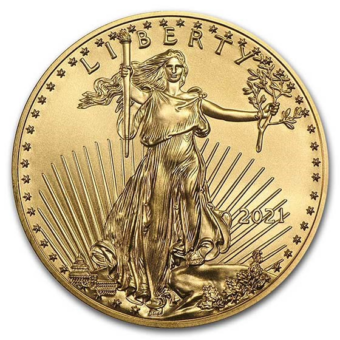The Gold Trail: A Daily Journey Through the Week's Market
Monday - 1.08.24: Gold price surged to an all-time high of $2,152 an ounce, setting a record in the market. Gold and silver scrap prices also experienced an increase while platinum prices showed a decline. Traders await Thursday’s CPI and Friday’s PPI data.
Tuesday - 1.09.24: U.S. gold futures showed a slight rise of 0.1%, closing at $2,034.20 per ounce. This slight increase occurred as investors were cautious ahead of the U.S. inflation data release, which was expected to impact the Federal Reserve's rate cut trajectory.
Wednesday - 1.10.24: Gold prices edged up, supported by a slightly weaker U.S. dollar. The spot gold price increased by 0.2% to $2,033.90 per ounce, and U.S. gold futures rose by 0.3% to $2,040.00 per ounce. The market was focused on the upcoming U.S. inflation report, which was expected to influence Federal Reserve's interest rate decisions. Silver was reported to be steady at $22.96 per ounce.
Thursday - 1.11.24: Gold and silver prices dropped in midday U.S. trading on the day the U.S. inflation report was released. Gold hit a four-week low and silver a two-month low due to the report, which indicated higher-than-expected inflation, boosting the U.S. dollar index and increasing U.S. Treasury yields. February gold was last down $6.30 at $2,021.40, while March silver was last down $0.311 at $22.75. The higher inflation data supports a tighter U.S. monetary policy, affecting precious metals prices negatively.
Friday- 1.12.24: Gold and silver prices surged in early U.S. trading on Friday due to safe-haven buying after U.S.-British airstrikes against Yemen rebels. Gold hit $2,054.50, and silver reached $23.225. The strikes, a response to Houthi attacks impacting global trade, led to a spike in gold and oil prices. Amidst these developments, the U.S. dollar strengthens, and crude oil prices climb, with U.S. Treasury yields also on the rise.
Gold Market's Cool Response to Falling U.S. Producer Prices
Gold prices have soared above $2,050 an ounce as U.S. Producer Price Index (PPI) showed a decrease of 0.1% in December, indicating a cooling of producer inflation pressures. This unexpected dip in producer prices is supporting a bullish momentum in the gold market, as it aligns with expectations that the Federal Reserve might ease interest rates sooner than anticipated. The decline in PPI, particularly in the prices for final demand goods, is a critical factor influencing the gold market's current trends.
Super QE and U.S. Dollar Debasement Loom as the Fed Prepares to Pivot - Expert Warns
In a recent interview, financial expert Matthew Piepenburg dismissed the notion of a soft landing for the U.S. economy, highlighting economic indicators such as an inverted yield curve and a decline in the M2 money supply. Piepenburg predicts that the Federal Reserve will need to make rate cuts in 2024 to prevent a potential economic downturn, as keeping rates high could lead to a market "bloodbath." He also emphasized the significance of the U.S. debt level on a global scale, as waning demand for U.S. Treasuries and the dollar could necessitate substantial money printing and a move towards "super QE," ultimately debasing the U.S. dollar. Furthermore, he highlighted the impending shift away from the U.S. dollar in global monetary policy, leading to a multipolar world with potential volatility and uncertainty ahead, involving measures such as "pause, pivot, QE, excuses, Bretton Woods 2.0," with accountability and responsibility coming into question, and the potential impact of Saudi Arabia shifting away from selling oil exclusively in U.S. dollars, which could have a dramatic effect on gold prices and further weaken the dollar's position as the global reserve currency.
Gold Prices More Sensitive to Market Sentiment Than Inflation, Suggests CPI Selloff
Gold's recent price drop following a hotter-than-expected U.S. CPI report highlights that its value is more influenced by market sentiment and U.S. dollar strength rather than direct inflation data. Matt Weller from StoneX notes that while gold is often seen as an inflation hedge, its day-to-day price is more impacted by trader sentiment. The CPI report, indicating persistent inflation, suggests a continued firm Federal Reserve stance, strengthening the dollar and reducing gold's appeal compared to stocks or bonds. Despite the selloff, gold's technical outlook remains positive with a potential for future price increases.
U.S. Consumers' Record-Breaking Borrowing Raises Recession Red Flags
Americans are in the midst of a historic debt binge, with consumer borrowing surging by $23.75 billion in November, surpassing economists' expectations and pushing total outstanding credit balances above $5 trillion for the first time in history, driven mainly by increased revolving credit, including credit card debt. This alarming rise in debt levels has raised concerns as delinquencies reach their highest level since 2012. The average credit card interest rate, now exceeding 20%, is at an all-time high, making it financially suffocating for those carrying balances. Shockingly, 56 million cardholders in the U.S. have been in debt for at least a year. The situation is exacerbated by the fact that more than 60% of Americans live paycheck to paycheck. Inflation is hitting hard, as exemplified by a restaurant owner charging $16 for a BLT sandwich but only making $2 in profit due to soaring ingredient costs. Economist Cam Harvey predicts a recession in 2024 based on the yield curve, adding to the economic challenges that the nation faces, with long-term trends pointing to a potential system-wide meltdown.
Potential Black Swan Events Looming in 2024 U.S. Elections, Warns Investor Gary Cardone
Investor and entrepreneur Gary Cardone warns of high risks associated with the 2024 U.S. presidential election, potentially leading to unexpected, significant events, often termed as 'Black Swan' events. These events could majorly impact the election process. Cardone's caution reflects the growing uncertainty and unpredictable nature of global and political landscapes, which could have far-reaching consequences on the election outcomes and the overall political stability.
Gold's Shaky Throne: HSBC Warns $2,000 Level Could Buckle Under USD Strength
HSBC's currency analysts are cautioning that the record-breaking gold prices, which climbed above $2,000 an ounce due to weakness in the U.S. dollar in late 2023, may not hold in 2024. Despite maintaining its position in the early weeks of the new year, HSBC's precious metals team believes that the gold market is overextended and expects a decline as higher prices start to impact physical demand, particularly in jewelry and bullion sales. The bank anticipates renewed momentum in the U.S. dollar, largely influenced by the Federal Reserve's restrictive monetary policy. Market expectations of substantial Fed rate cuts may be overly optimistic, potentially providing bullish momentum to the dollar if these cuts do not materialize as expected. This could, in turn, cause gold prices to retreat. Additionally, rate cuts may result in higher real interest rates, creating further headwinds for gold. While gold may face selling pressure in the coming months, HSBC suggests that certain underlying factors, such as geopolitical and trade risks, along with continued central bank demand, may provide support, limiting the downside for gold prices despite the uncertainties.
Bitcoin ETFs Launch in U.S. with Volatile Trading: A New Era for Crypto Investment
On January 11, 2024, Bitcoin ETFs made their debut on U.S. exchanges, marking a significant moment for cryptocurrency investment. The day saw substantial trading activity and volatility, reflecting the broader crypto market's fluctuations. Grayscale Bitcoin Trust (GBTC) and iShares Bitcoin Trust (IBIT) were among the key players, with GBTC closing up slightly and IBIT experiencing a drop. The performance of these ETFs and their alignment with Bitcoin's price will be closely monitored by investors and financial advisors. The launch is seen as a major step in mainstreaming cryptocurrency investments, making them accessible and simpler for a broader investor base.
BRICS Continues Rapid De-Dollarization Efforts in 2024, Threatening US Dollar Dominance
The BRICS alliance, consisting of Brazil, Russia, India, China, and South Africa, is aggressively pursuing its mission to eliminate the dominance of the US dollar in the global financial system. Since expanding to include ten nations in August 2023, BRICS has been actively promoting trade in local currencies and working towards the creation of a new BRICS currency to challenge the US dollar's position in international markets. Founding members Russia and China have led the way in conducting bilateral trade in local currencies, with their trade turnover exceeding $200 billion ahead of schedule. As part of these efforts, at least 16 additional countries are expressing interest in joining BRICS, which could further weaken the US dollar's financial system. While the complete elimination of the US dollar's global dominance in 2024 remains uncertain, BRICS presents a significant challenge to the long-standing supremacy of the US currency in global trade. However, the road ahead for BRICS is challenging, as the US dollar still enjoys substantial support worldwide. BRICS aims to elevate the voices of developing countries and potentially garner more support for replacing the US dollar with its own or local currencies, but achieving this goal will require sustained effort.
Next Week’s Key Events
Monday, Jan. 15
- Martin Luther King Jr. holiday, none scheduled
Tuesday, Jan. 16
- No reports scheduled
Wednesday, Jan. 17
- 8:30 am: U.S. Retail Sales (Dec)
- 9:15 am: Industrial Production & Capacity Utilization (Dec)
Thursday, Jan. 18
- 8:30 am: Initial Jobless Claims (Jan. 13)
- 8:30 am: Philadelphia Fed Manufacturing Survey (Dec)
- 8:30 am: Housing Starts (Dec)
Friday, Jan. 19
- 10:00 am: Consumer Sentiment (prelim) (Jan)
- 10:00 am: Existing Home Sales (Dec)
IMPACT ON GOLD AND SILVER MARKETS:
U.S. Retail Sales: Strong retail sales often indicate a healthy economy, which could strengthen the USD and potentially put downward pressure on gold and silver prices, as they are priced in dollars.
Industrial Production & Capacity Utilization: Higher industrial production can signal economic strength, potentially strengthening the USD and negatively impacting precious metal prices. However, increased industrial demand for silver in production could support silver prices.
Initial Jobless Claims: Lower jobless claims are a sign of a robust labor market, which could strengthen the USD and negatively impact gold and silver. Conversely, higher claims could weaken the USD and boost these metals as safe-haven assets.
Philadelphia Fed Manufacturing Survey: A positive report can indicate economic strength, potentially pressuring gold and silver prices through a stronger USD. However, manufacturing growth can also increase industrial demand for silver.
Housing Starts: A strong housing market can signal economic health, potentially strengthening the USD and pressuring gold and silver prices. However, construction also uses silver, which could support its price.
Consumer Sentiment: Higher consumer confidence suggests economic optimism, which could lead to a stronger USD and downward pressure on gold and silver. Conversely, lower sentiment could increase their appeal as safe havens.
Existing Home Sales: Like housing starts, robust home sales can indicate a strong economy, potentially strengthening the USD and negatively impacting precious metal prices. However, the construction-related demand for silver could support its price.






















